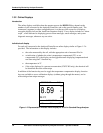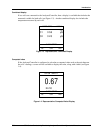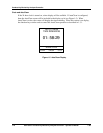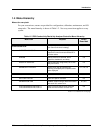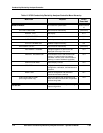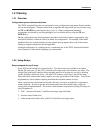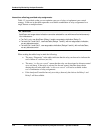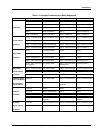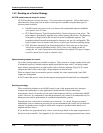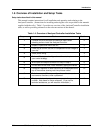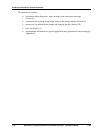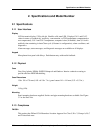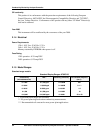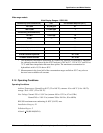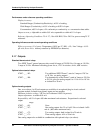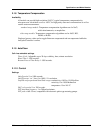
Conductivity/Resistivity Analyzer/Controller
9782 Series Conductivity/Resistivity Analyzer/Controller - Operator’s Manual 7/991-16
1.5.3 Deciding on a Control Strategy
All 9782 models can use relays for control
All 9782 models have at least two relays. (Two more relays are optional.) Unless dedicated to
other functions, these relays can be used to control process variables using the three types of
discrete control available.
• On/Off Control using one to four cycle timers with configurable setpoint, deadband,
cycle period, and “on” time.
• PFT (Pulse Frequency Type) Proportional-Only Control using one to four relays. The
pulse output is generated by repeated relay contact opening and closure. The frequency
of the pulse is proportional to the deviation from the configurable setpoint. The
proportional band limit and maximum pulse frequency rate are also configurable. This
type of output is used to control such devices as pulse-type electronic metering pumps.
• DAT (Duration Adjusting Type) Proportional-Only Control using one to four relays.
Also known as time-proportioned control, DAT cycles a relay output on and off,
varying the “on” time in proportion to the deviation from setpoint. This type of output
is used to control devices such as solenoid valves.
Optional analog outputs for control
Up to three analog outputs are available as options. These current or voltage outputs can be used
to retransmit a process variable using an output signal that has been scaled. An analog output
that is directly proportional to an input can be used for Current Adjusting Type (CAT) control.
(Despite the name of this control type, voltage outputs can also be used.)
When an output is used to retransmit a process variable, the values representing 0 and 100%
outputs are configurable.
In CAT control the process values for the setpoint and proportional band limit are configurable.
Selecting a strategy
When considering whether to use On/Off control or one of the proportional-only strategies,
compare the requirements of your application with the benefits of each control type.
Proportional control will usually provide faster batch treatment with less overshoot than On/Off
control. However, it is important to note that proportional-only control is recommended only for
batch processes and for pretreatment in continuous neutralization systems.
Proportional-only control does not include any reset action. As a result, changes in reagent
demand that occur in continuous processes are not accommodated and control will not reach the
setpoint. In a batch process, reagent is added until a setpoint is reached and the batch is not
emptied until this occurs.
If you decide to use proportional-only control, select the type based on the input requirements of
the device to be controlled. See Appendix A for a discussion of tuning proportional-only control.



